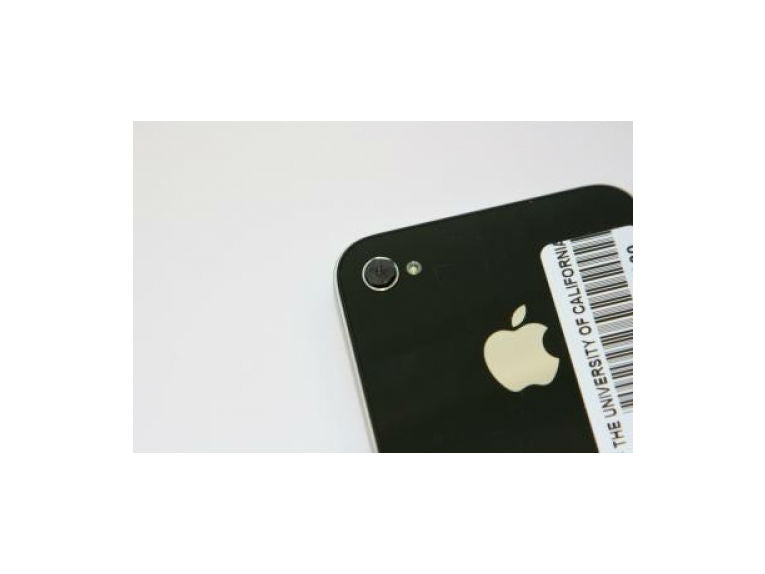This is an iPhone microscope. It consists of a 1-millimeter-diameter ball lens embedded in a rubber sheet and taped over the smartphone's camera; Credit: Z. J. Smith, K. Chu, A. R. Espenson, M. Rahimzadeh, A. Gryshuk, M. Molinaro, D. M. Dwyre, S. Lane, D. Matthews, S. Wachsmann-Hogiu
Researchers at the University of California, Davis have developed an application for the iPhone that's reminiscent of technology from the fictional universe of Star Trek. The app/device transforms the popular smartphone into a remarkably sophisticated medical imaging and chemical-detection device. The new app will be unveiled at the annual meeting of the Optical Society of America, taking place in San Jose, Calif. Oct. 16-20.
The device combines the power of a simple, relatively inexpensive add-on lens and the iPhone's existing camera to provide a remarkable level of medical-quality magnification. Although the tiny lens distorts the light it collects and magnifies, software helps render a near microscope-quality image.

These are stained samples of pollen (left images) and plant stems (right two images). Top row: commercial microscope. Bottom row: cell phone microscope

These are images of a sugar crystal taken through polarized light filters. Left: traditional microscope. Right: cell phone microscope
Credit for both images directly above: Z. J. Smith, K. Chu, A. R. Espenson, M. Rahimzadeh, A. Gryshuk, M. Molinaro, D. M. Dwyre, S. Lane, D. Matthews, S. Wachsmann-Hogiu
Test images show that the tricked-out iPhone is capable of providing detailed pictures of individual cells. Combined with the existing communications capabilities of the smartphone, the device could become a relatively inexpensive, flexible medical imaging device. Promoters envision health care workers using the device to collect bedside data in remote clinics throughout the developing world. The images could be uploaded for consultation with experts in distant locations.
"Field workers could put a blood sample on a slide, take a picture, and send it to specialists to analyze," says Sebastian Wachsmann-Hogiu, a physicist at U. C. Davis, and lead author of the research. Additional diagnostic tools are possible by swapping out lenses, say the device's developers. They've created a lens capable of transforming the iPhone into a spectrometer, for instance. Although still in the developmental phase, researchers believe it may help transform the iPhone into a device capable of sophisticated tasks such as measuring the amount of oxygen dissolved in a drop of blood, or identifying chemical markers of disease.
The U. C. Davis group is not the first to build a smartphone microscope, but they aim to build the best. "...We thought we could make something simpler and less expensive," Wachsmann-Hogiu says. What they've made is a real-world device that combines aspects of the fictional Star Trek tricorder and communicator.
'There's an app for that' used in the title of this news item is an official Apple, Inc Trademark.










